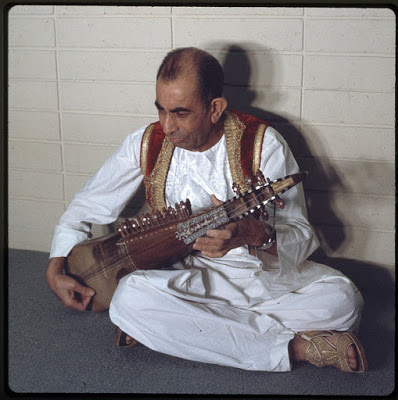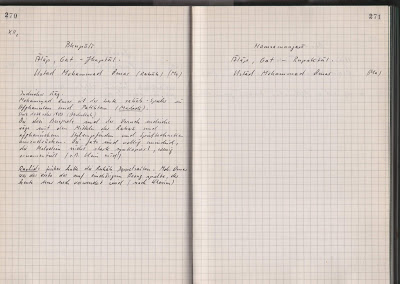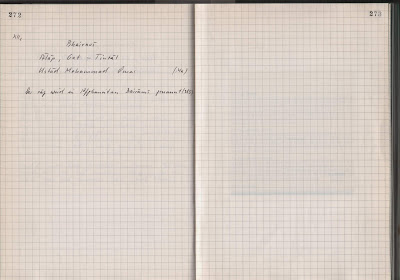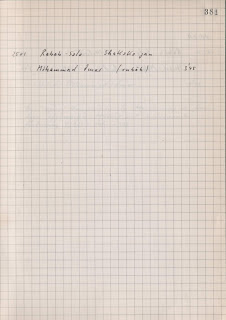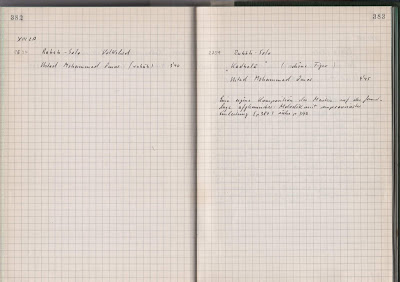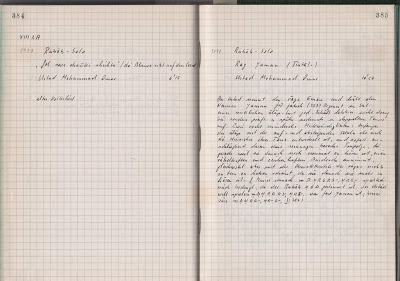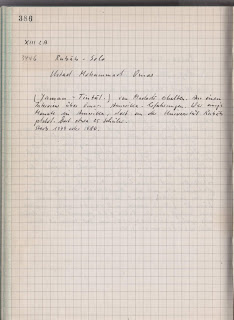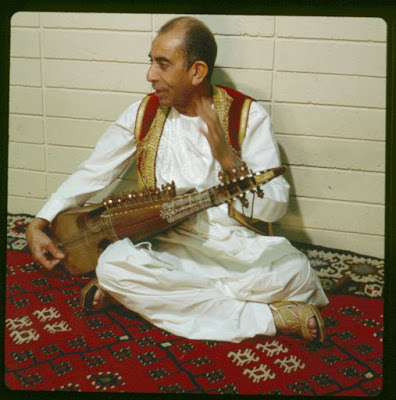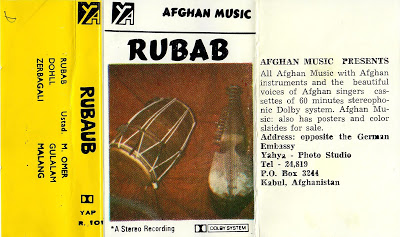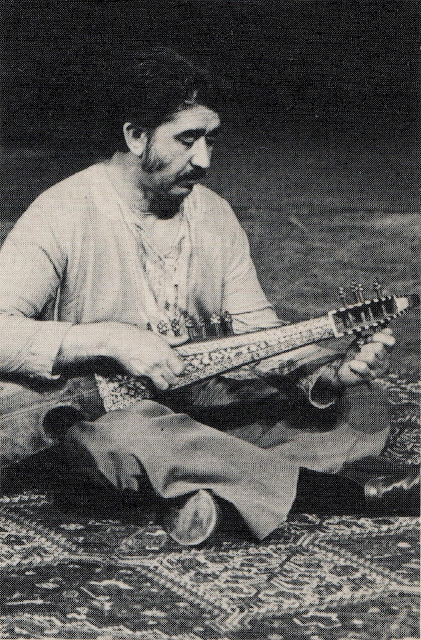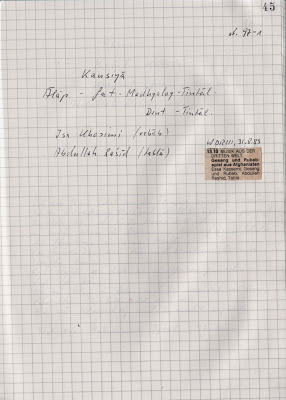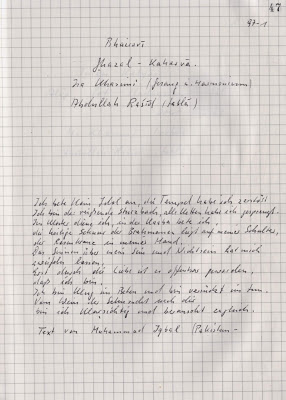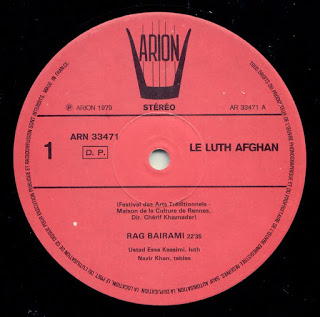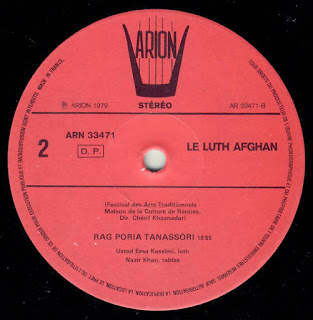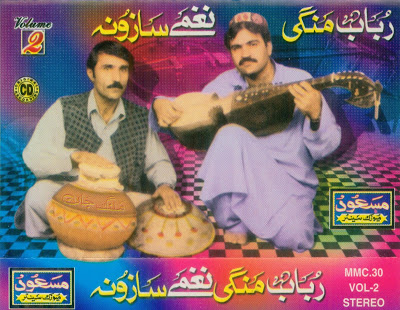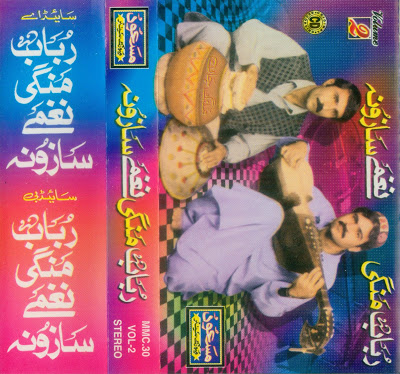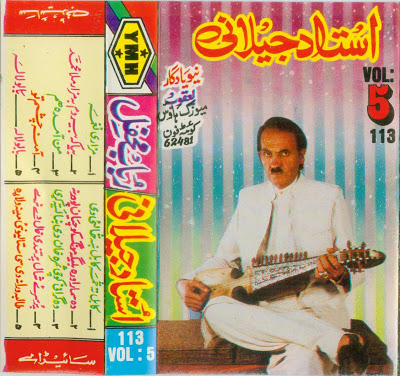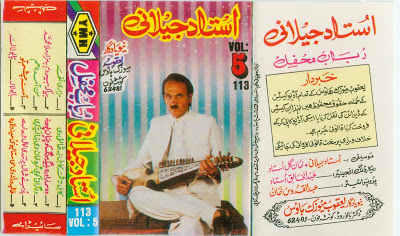Here we post a radio program on music from Afghanistan broadcast by WDR (Western German Radio) in Cologne on 31st of August 1983s. I received this recently from my friend KF. He made notes on the pieces performed. See below two pages from his notebook.
Essa Kassemi (Isa Khasemi) was and is quite well known through his French LP which was widely present in the record shops back then and which we posted a couple of days ago. He lives in Cologne since several decades. On the back cover of his LP this information is given:
"Ustad Essa Kassimi, classical singer and master of the short-necked lute or Robab, born in Kabul in 1932, comes from a famous family of traditional musicians. On the maternal side, his grandfather Ustad Mohammad Kassem (Ustad Qasim (1882-1955)), formerly among the most important musicians of the Royal Court, is considered today as the founder of the classical Afghan musical art. It is he who teaches Essa Kassimi the techniques of singing, Tabla, Robab. From his father, Aga Mohammad, famous classical singer, Essa Kassimi learns the mastery of the instruments Dilruba, Sarangi, Harmonium and Robab."
Otherwise not much is known about him. I remember that I saw in the 1970s a small poster announcing a concert by him in Düsseldorf. Unfortunately I couldn't make it to the concert, which I still regret.
The Program consists of three pieces:
1. Raga Kausiya - Rubab
2. Ghazal in Raga Bhairavi
3. Raga Iman (Yaman) Kalyan - Rubab
Many thanks to KF for sharing so generously.
